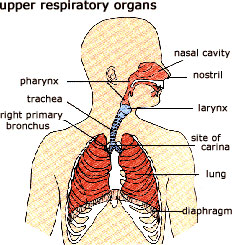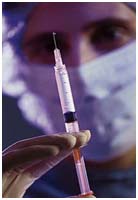Infections The word ‘cold’ is used in everyday terms to cover a variety of respiratory infections. The common cold is the most prevalent of all communicable diseases. It is referred to as an upper respiratory infection.
 There are more than 100 different rhinoviruses that cause colds. Colds are transmitted by either direct or indirect contact. They are spread by droplets expelled by a person with a cold who sneezes, coughs or speaks. The handling of money is one way of passing on or ‘catching’ a cold.
There are more than 100 different rhinoviruses that cause colds. Colds are transmitted by either direct or indirect contact. They are spread by droplets expelled by a person with a cold who sneezes, coughs or speaks. The handling of money is one way of passing on or ‘catching’ a cold.
The common cold is the most prevalent of all communicable diseases. It is referred to as an upper respiratory infection.
There are more than 100 different rhinoviruses that cause colds. Colds are transmitted by either direct or indirect contact. They are spread by droplets expelled by a person with a cold who sneezes, coughs or speaks. The handling of money is one way of passing on or ‘catching’ a cold.
Symptoms and signs Frequently the cold begins with a scratchy or sore throat, watery discharge or blocked nose, and sneezing. Not all colds follow the same pattern. In some instances a secondary bacterial infection occurs producing a thickened yellow nasal discharge, watering eyes, mild fever, sore throat, headache, malaise (discomfort and uneasiness caused by an illness), myalgia, and dry cough. Additional to the secondary infection can be laryngitis (hoarseness/”frog in the throat”), traccheitis, (irritation of trachea), acute bronchitis, sinusitis, and even the inflammation of the middle ear (otitis media)
Control and treatment Treatment of the common cold is symptomatic. Most colds last 5 to 10 days regardless of treatment. Nonprescription cold medications may help ease some symptoms (if a top athlete be aware of the nonprescription cold medications which are on the banned substance lists <coming soon>). To avoid colds one should avoid contact with large groups of people, wash hands frequently (Pontius Pilot style, thus expressing you want no part of the matter), avoid sharing personal items, eat a balanced diet, and drink at least 8-ounce glasses of water a day. Emotional stress and extreme fatigue should be avoided as much as possible. (And yes, we know achieving all the latter is practically impossible)
Listed below are 8 Upper Respiratory Infections
![]() sinusitis
sinusitis
![]() pharyngitis
pharyngitis
![]() influenza
influenza
![]() hay fever
hay fever
![]() infectious mononucleosis
infectious mononucleosis
![]() acute bronchitis
acute bronchitis
![]() bronchial asthma
bronchial asthma
![]() exercise induced bronchial obstruction (asthma)
exercise induced bronchial obstruction (asthma)


























So should I run while I have an upper respiratory infection or just take it easy
best not to run, especially if your muscles are aching and your pulse is higher than normal
TheEd